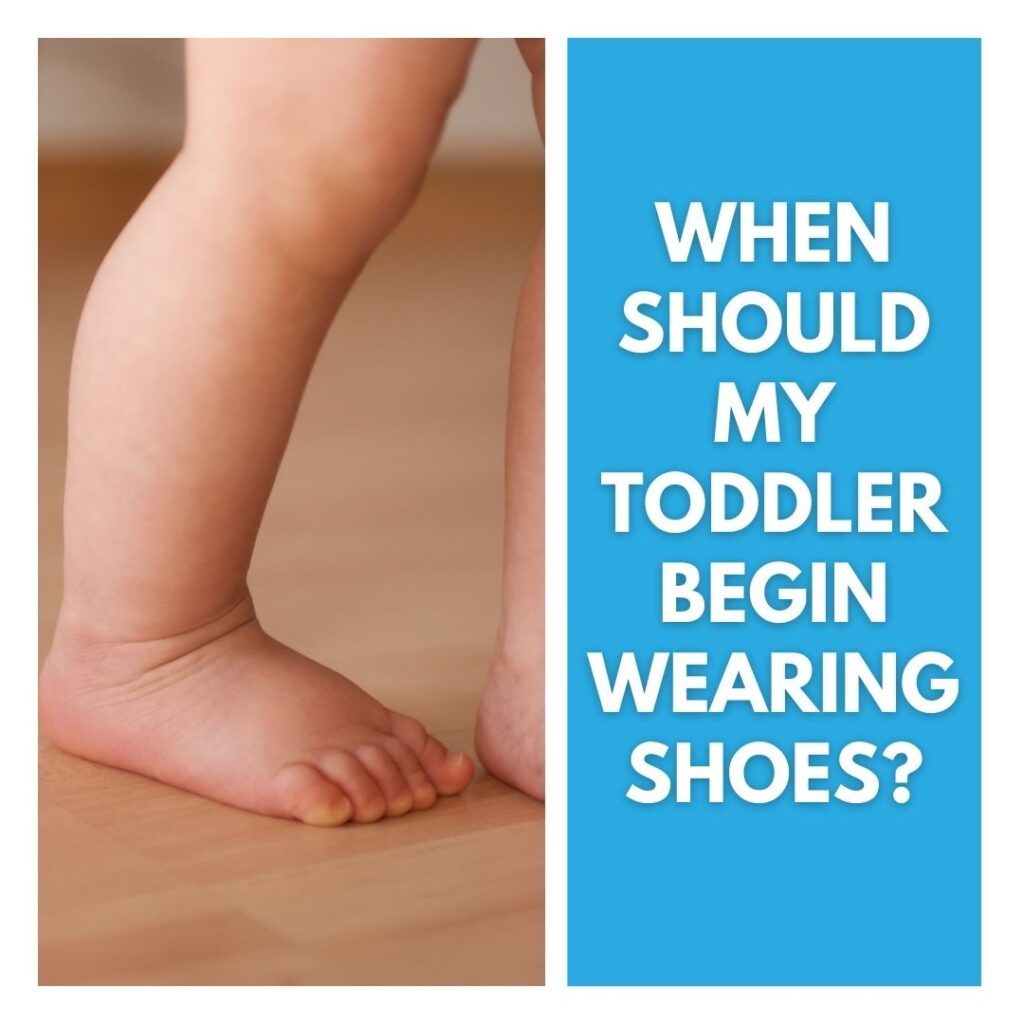When Should my Toddler Begin Wearing Shoes?

This topic has been debated by health care professionals for years. Still to this day there is not a uniform answer provided among various healthcare groups/providers. The information provided in this article is what most pediatricians and therapists agree upon when it comes to the use of shoes for the toddler beginning to learn to walk.
BAREFOOT VS. SHOES
If you have a new “walker” in the family their safety is of course the most important thing to consider. If they are in the daycare setting you have likely been told that when they enter the “walker” room, they must have shoes to wear while in the room. This is primary a safety tactic in the sense that shoes help your toddler gain and maintain traction with their rubber soles. The shoes also help prevent or deter various injuries to their toes and feet with various objects to hit, run into, or stumble upon. Just because most daycare facilities require this in the Louisiana systems, this does not mean it is the gold standard and should be applied outside of the facility. The American Academy of Pediatrics (AAP) states that barefoot is best for toddlers’ feet at home when learning to walk. Of course, socks with non-skid surfaces on the bottom can be applied for warmth. Barefoot walking helps establish foot development, improves agility, strength, and balance. Barefoot walking can also help boosts sensory-motor development. Then, once your toddler starts walking outdoors, shoes are recommended as a form of protection. As far as what type of shoes to wear, they recommend the following guidelines:
- Shoes should be lightweight and flexible to support natural foot movement.
- Shoes should be made of a material that allows your child’s feet to be able to breathe easily.
- Shoes should have rubber soles for traction to prevent slipping or sliding.
- Shoes should have covered toes.
- Shoes should fit snugly in the heel but still allow room at the toes.
HOW TO DETERMINE TO RIGHT SHOE?
The AAP states that shoes should be checked monthly to ensure proper fit. There should be about a finger-width distance between the big toe and the end of the shoe. It is better to have no shoes at all, then to have shoes that fit too tight. Do not be surprised if the first pair of shoes only lasts a couple months.
Crocs and flip-flops should be avoided due to the fact that they have a hard time staying on the feet and provide little protection to the toes and feet.
Shoes that provide extra support around the ankles is not necessarily the best fit either. They don’t do much to help support your toddlers’ feet, but they do help prevent your child from being able to take them off. Of course, there are various conditions that may require some form of support or casting by a professional. If this is a concern you may have for your child, please talk with your health care provider about their individual needs.
HOW EARLY SHOULD I PUT SHOES ON MY CHILD?
Shoes are not necessarily recommended for the “pre-walkers” as well. In most cases, shoes applied to babies are more decorative than anything else. In most cases, these shoes are soft-sole shoes with little to no support. These days, socks can be worn that are considered just as dressy and can replace the application of shoes in the “pre-walker.” If your infant does wear these soft-sole shoes, be sure to remove them when your child begins to walk or cruise to help and assist in their balance.
THE TAKEAWAY MESSAGE
Barefoot is best for the newly walking toddler when it can be done safely. Shoes can provide protection and still allow for development when your child begins to wander outdoors. You should check weekly to ensure that your child footwear is fitting appropriately and that they have room to move and grow in the shoes they are wearing. Shoes should also not be shared or passed down among siblings. Just like everything else, shoes have a lifespan and can begin to break down over time. Thus, reducing their support and ability to perform to their designed specifications. As discussed earlier, there is no one answer for every child and these are only suggestions. If you have any specific concerns or questions, please don’t hesitate to ask your therapist or pediatrician to get your child the help they may need.
Monroe
West Monroe
Ruston
Shreveport
Monday-Friday
8am-5:30pm
Copyright © 2026 Melanie Massey Physical Therapy
